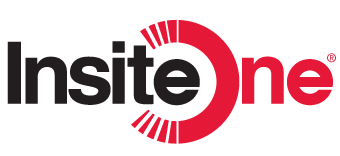ROI Considerations When Moving to the Cloud

Introduction
Healthcare has been slow to adopt cloud-based technology. Yet, industry trends point to greater adoption as hospitals grapple with infrastructure and staffing costs. Vendors continue to offer new hosted solutions that provide better scalability, data security, and enterprise access. As IT organizations look for ways to control escalating costs while refreshing outdated technology, the cloud has become an avenue to improve many organizational leaders’ top pain points, but there are ROI considerations when moving to the cloud that should be factored into your decision making. In terms of continued adoption, the global growth rate for cloud spending is expected to increase 32.7% over 2023 spending alone, according to Statista.
The challenge of moving to the cloud, and an early misconception, was the potential increase in costs. Unlike on-premises solutions, you move from software “ownership” to software “usage”, and some solutions are completely managed by the vendor. Making this change, organizations have struggled to show the ROI improvements when investing in cloud solutions.
Whether you are looking to move to the cloud for increased scalability, data safety and security improvements, disaster recovery, cost savings, speed, enhanced clinical collaboration, or reducing your on-premises infrastructure, we will explore a few of the misconceptions surrounding cloud ROIs.
ROI Consideration #1: The gap between “what was sold” vs. “reality”.
PwC noted in their 2023 Cloud Business Survey that more than half of respondents indicated they did not meet the ROI they expected. The biggest reason companies fall short on expected cloud benefits is how they measure their ROI. Not factoring in all aspects of your cloud transition can cause unexpected costs to crush your initial projections. Higher storage costs when using the public cloud, for example, is one area many organizations do not adequately plan for.
InsiteOne Tip
As the first true cloud vendor neutral archive (VNA), InsiteOne understands the challenges and costs when moving your infrastructure to the cloud. We explain the costs and benefits you would experience when making the transition to the cloud. Things like server infrastructure costs, the physical space of your data center, on-going maintenance and support, software licensing, staffing, energy bills, and even productivity gains, are all things that need to be captured when evaluating the ROI of moving to the cloud.
ROI Consideration #2: Comparing cloud vs. on premises infrastructure costs alone isn’t enough.
Moving to the cloud will alleviate your on-premises infrastructure costs but other important factors must be considered as well. Operational performance, increased business ability, and lower environmental costs, are just a few to consider. Also, do not forget to factor in direct and indirect benefits when building your ROI Performa to gain a more accurate ROI.
InsiteOne Tip
Understand your current on-going costs in maintaining your on-premises infrastructure. Consider the obvious and not so obvious cost factors in your analysis when building your ROI. Once you understand true current costs, you will be able to evaluate the impact moving to the cloud will have on your organization. Simply comparing the CAPEX vs. OPEX costs, will not provide you with an accurate representation of the true ROI you could realize moving to the cloud.
ROI Consideration #3: Understand one-time vs. on-going costs.
Shifting from on-premises infrastructure to the cloud will incur upfront and on-going costs. Evaluating an ROI over a short time period will not produce stellar results due to upfront costs. Even with CAPEX purchases, upfront costs exist and may be higher than expected. Upfront costs even out the longer your timeframe is when evaluating your ROI. Upfront costs aside, a cloud infrastructure offers immediate benefits plus significant value over time.
InsiteOne Tip
One-time costs you may have when moving to the cloud include, data migration (generally the biggest cost, especially with medical imaging data), implementation and consulting fees, 3rd party integrations, and user training. On-going costs include monthly subscription fees, labor, and routine maintenance. As you move your infrastructure to the cloud, look for new areas of cost consolidation, labor reallocation, and new opportunities to improve processes/workflows, or evaluate new revenue opportunities achievable by offering new services. Switching to the cloud provides your organization an opportunity to evaluate your infrastructure and service delivery model and make changes that provide better scale and flexibility. Over the long-term, cloud technology can be more cost effective than on-premises infrastructures.
ROI Consideration #4: Factor in the intangible benefits you gain when moving to the cloud.
Infrastructure costs are easy to calculate when determining an ROI. But what about the intangible benefits? Realistically, intangible benefits will be different for every organization because not every organization will move to the cloud for the same reasons. There are some common intangible benefits, like added security, reduced costs, improved collaboration, speed to market, infinite scalability, easier upgrades, shifting from CAPEX to OPEX, and better long-term flexibility that all add value when moving to the cloud.
InsiteOne Tip
Increasing clinical collaboration is one of the most important intangible benefits when moving healthcare to the cloud. Improving data access and providing better tools fosters cross-team collaboration that can have a direct impact on patient outcomes. Although this is a tough benefit to place a value on, it does exist and must be considered. Additionally, adding new revenue streams, like data monetization strategies, become more realistic, easier to market and access when cloud technology is used. Finally, reallocating staff to more important projects, and reducing overall operational spending are additional benefits that can be tough to calculate, but do not forget to consider their overall impact.
ROI Consideration #5: Reinventing your business model via the could offers the highest ROI
Shifting some of your applications to the cloud alone does not offer the highest ROI. Powering your organization with cloud technology provides the greatest ROI gains. According to PwC, businesses that move their operations to the cloud are four times more likely to see value in areas where those that only partially moved to the cloud would see.
InsiteOne Tip
Companies that experience higher value in their cloud transition have the four following things in common: 1) a holistic and unwavering approach to the cloud 2) C-Suite collaboration and early buy-in 3) a formalized data, AI, and analytics strategy and 4) a focus approach on trust and controls. Identifying potential risks early and through all stages of your cloud transition allows your organization to invest in the right resources to mitigate risks that may arise along the way.
Conclusion
As more healthcare organizations move their business operations to the cloud, proof exists that cloud technology provides distinct advantages over on-premises infrastructures. Although risks exist, the rewards are there to be gained when the right strategy is in place. The cloud offers opportunities for organizations to re-think their business models of the future and investing in cloud technology can offer better workflows, lower long-term costs, and infinite on-demand scalability. Developing a “cloud mindset” must start at the top and a detailed analysis is required to understand 1) how your organization will compete and deliver services in the future 2) what services can be reinvented using cloud technology, and 3) where operations can be streamlined to reduce costs and eliminate bottlenecks.
Although many factors need to be analyzed when making the cloud transition, understanding every aspect of your current infrastructure helps you properly prepare a ROI analysis. InsiteOne has been helping our clients realize the value that the cloud can bring to their organization for decades. Our experience and guidance can help you uncover areas where the cloud can further improve your ROI. All our solutions are delivered as a cloud hosted managed service so your organization can better control long-term costs while maximizing the value the technology we offer provides.
Learn more about how InsiteOne can help you with cloud adoption (image archiving, operational RIS/PACS, or cloud-hosted disaster recovery RIS/PACS). Reach out to us today to start a conversation to explore how moving to the cloud can provide your organization with many long-term benefits.




